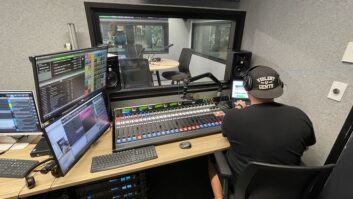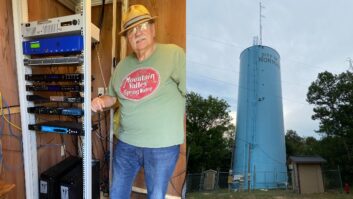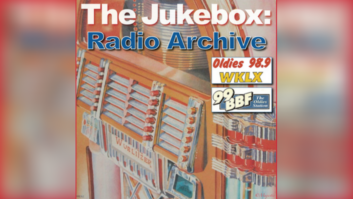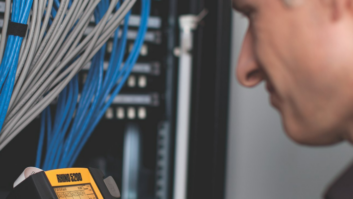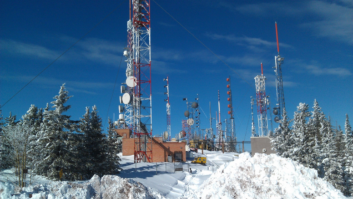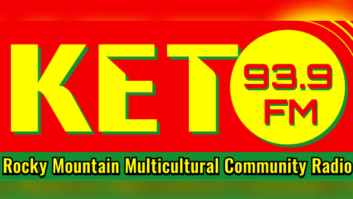
The odds are good that at some point in your career one of your radio stations has taken programming from a national or regional radio network. In most cases, delivery of that programming has been via satellite. You connect a satellite receiver to a dish, audio and relay closures are available at the back, and you play the audio over the air using the relays to trigger your automation. But did you ever wonder what goes on at the network to get that audio to you?
The best way to illustrate the operation of network distribution is to describe each step in the process a network uses to get content to your station. Those steps include:
- Content creation
- Program contribution/ingest
- Content management/automation/audio routing
- Distribution
Content creation
This is where it all begins, the programs your station runs from the network have to start somewhere. Some content is produced by the network itself, other content may be created by our content partners and distributed by the network. Dial Global has approximately 70 studios combined across our company. We have studios in our offices in New York, Los Angeles, Dallas, Denver, Seattle and Valencia, Calif. Our content partners also have studios of their own, which amount to another 30-40 studios in use during a typical day. There’s a good chance most of these studios are in use simultaneously creating some program that’s being fed to our satellite uplink’s 120 channels.
In addition, we have our sports programming (including the NFL, NCAA and the Olympics) broadcasts, each of which is a remote broadcast. The model used to produce a sporting event or any remote is not unlike that of a stand-alone radio station. The challenge is doing multiple remotes simultaneously. We broadcast all 64 NCAA basketball games at the front end of March Madness for example. That’s a lot of simultaneous remotes. Imagine all of those games going on at the same time that reporters in Washington and the Middle East are about to go live on a top-of-the-hour newscast. Our ability to take in all of the feeds from the studios, partners and remote locations requires quite an elaborate array of connections to those locations, which leads to the next area, program contribution.
Backhaul, contribution and ingest
A network head end can house an amazing array of telecommunications. Some of the studios are located at the same location as the head end. For those, direct wiring via the router is the connection method. But for studios not on site or for remotes, there are various ways to connect. Common backhaul methods used to get programming to the head end include ISDN and T-1. For studios that require 24/7 connectivity, the point-to-point T-1 has been the method of choice. We can get high-quality audio across a T-1 and it has bidirectional paths for monitoring feeds and return cues (IFB). To send automation cues to the head end, we’ll typically use serial or IP connectivity on the T-1 to send next event closures from a remote studio to the head end. These are to signal a commercial break or station identification. We use ISDN codecs to back up the T-1s in the event of a failure.

For short-form content or remotes like sporting events, ISDN works well. T-1 circuits tend to be impractical in these examples. While Internet codecs have become popular and work well, they introduce latency, which is terrible for live events, and shared Internet connections tend to be unreliable, even if they are broadband. In our experience, they are okay to file a news story, but not very good to go live with.

Lately, we’re seeing an increase in the use of IP codecs over a PTP Ethernet link or MPLS. A few manufacturers make hybrid units that will connect to an IP link and use ISDN as a backup using an auto-failover feature. The quality on an MPLS or PTP Ethernet line is superior to a shared Internet connection in that the bandwidth is dedicated and the quality of service on the line is guaranteed by the provider. Latency is typically lower on these lines because of the higher quality of service. Audio quality over MPLS can be adjusted to various algorithms and compression schemes – it all depends on how much you want to spend for the bandwidth.
Another backhaul method is satellite, where some program producers with small networks of their own will deliver their program to us via satellite and we’ll rebroadcast that. We downlink their signal, decode it, run it into our router as a source and then re-uplink it as necessary.
It is desirable to have the programs delivered to the network head end without any audio compression. While not always possible, we strive to keep all audio backhauls in linear PCM formats as much as possible to minimize transcoding effects downstream.
Content management
We’ve created content and gotten it to the head end. With literally hundreds of programs to manage, how is it possible to keep track of it all?

Let’s start with routing. A network would be impossible to manage without a large audio router. Each of the audio content sources appears on a router input. The audio router supports analog or digital and a source might be a studio, an ISDN output, output from an audio card from an automation computer or a T-1 frame or codec output. Each of these router sources has a direct index association to our automation system. Each outgoing bus of the automation has a fixed router output. That gives the network the ability to send any audio source to any destination. Those destinations will be satellite channels, studios, audio automation inputs for recording or return feeds to the producers. In NY our audio router is 1049 x 1049 and in Denver our router is 672 x 800. There’s a lot of flexibility here to share sources to our uplink channels. Routing them all manually would be impossible to keep track of.

To keep track of everything we use a multi-channel automation system. In a typical radio station environment, schedules of what the station airs come from the traffic department (commercials) and programming department (music, liners) and are loaded into the audio content management system to create the day’s operating log. At the network, we have the same need but imagine doing that 150 times. Multichannel automation systems are used in larger networks like cable head ends, television networks and here at the radio network.
To scale up to run 150 simultaneous schedules from one system, we use an enterprise network controller. This ingests schedules and commands for all 150+ channels daily and sends commands to all external devices telling them what to do at just the right time to keep everything in synchronization. It controls the audio router, the audio record and playback system and the satellite uplink.
The network automation system is the heart of the network and really what keeps all programs running on time and over the right channels. Custom software is used to merge the traffic logs with the program schedules to create the day’s log. Which leads to the final area, distribution.
Distribution
The network automation has done its job in playing and routing the content we created earlier to a destination on the router. That destination is the satellite channel. Virtually all radio networks these days are using digital audio encoding of some type to encode the channels into a MCPC (Multiple Channels Per Carrier) uplink system. The head end multiplexes all of the individual channels into a single uplink carrier, which is then decoded by the satellite receiver. At the station, you tune your receiver to a channel and you get what the network is feeding into it at the head end.

Today’s more sophisticated satellite systems have the ability to do more than just stream audio in real time from the head end to the station. Programs and audio content can be sent in advance over the satellite and stored on the receivers hard drive or solid-state memory drive and can be played on command from the head end. The network automation system described above can be programmed to send those commands.

Programs can also be recorded by the receiver and played back at a later time in the event a station wants to delay broadcast a program. Before this feature was available, it was common for a network to play a program live, record it while it was playing live and then play it again three hours later for a West Coast time shift. This used satellite bandwidth to play the same thing twice, which can now be accomplished by the receivers, allowing more efficient use of the satellite bandwidth.
A radio network is a complex combination of many different systems that all need to work seamlessly together from many different locations involving many people. Now, the next time you listen to a network program, you know what’s gone into delivering that program to you.





